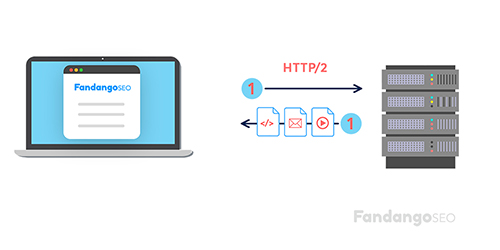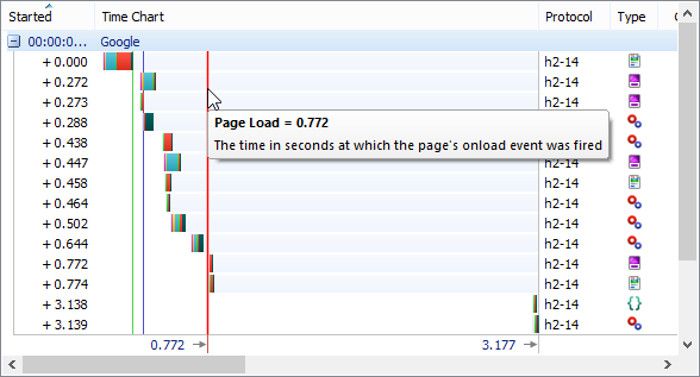The variety and amount of information exchanged on the Internet have transformed dramatically over the last decade. Content formats are larger and more complex, the use of mobile devices has increased significantly and the amount of Internet users is growing worldwide on a daily basis.
Table of Contents
What is HTTP/2?
The HTTP/2 protocol was published in 2015 with the aim of creating a faster and safer Internet, as there hadn’t really been any radical revision since HTTP 1.1. The implementation of HTTP/2 has been gradual and is still going on, but there are clear benefits for marketers doing this update.
Due to the increase and changes in the use of the Internet, a group of developers created SPDY, to build on top of the syntax of the original “HyperText Transfer Protocol” (HTTP).
Why is HTTP/2 good for SEO?
SPDY was developed with the main objective of finding faster ways to transport content on the Internet in order to reduce page loading speed. This is what SEO specialists look for now that search engines are aware of users’ behavior when it comes to site speed on mobile.
Most Internet browsers and a growing number of servers already support HTTP/2, but according to the latest studies, only a small percentage of the most important sites in the world have upgraded to this standard. However, this percentage is increasing, and online marketing specialists should be aware of the implications of this important update.
How was HTTP/2 Created?
SPDY was mainly developed by a group of Google engineers, and that provided the platform for HTTP/2.
With the help of some of the SPDY developers on Google, the HTTP/2 protocol is an initiative driven by the Internet Engineering Task Force (IETF). It is an initiative to build a stronger platform for the Internet that is in line with the needs of modern users.
What makes the HTTP / 2 protocol different?
HTTP/2 is developed on the same syntax as HTTP 1.1, so it’s more of an update than a complete revision. This makes the decision to upgrade much easier because the transition will be smoother, bringing benefits to Internet browsers, servers, and therefore users too.

The biggest differences from HTTP 1.1 are summarized in HTTP2 as follows:
– HTTP / 2 is binary, instead of textual
– It’s completely multiplexed, instead of ordered and blocked. Therefore, a connection can be used for parallelism
– It uses compression in the header to reduce overhead
– It allows servers to “push” responses proactively to client caches.

To simplify this, it means that HTTP/2 reduces load times by improving the efficiency of communications between browsers and servers.
Instead of presenting a sequence of exchanges between the server and the client, with HTTP/2, just one connection can host multiple exchanges at a time. And, more importantly, the server can make proactive responses without waiting to be called.
The owner of a website can compress some files to increase the loading speed. But in the end, a fundamental change in communications between the browser and the server is needed to solve these long-term problems!
And that is exactly where HTTP/2 comes in.
On a practical level, these interactions between browsers and servers begin to look like this:

With this simple example, we can clearly see how effective the HTTP/2 approach would be on a larger scale. This is done by launching and receiving multiple calls simultaneously through a connection, instead of doing them one at a time.
Why is HTTP/2 so useful?
It is vital for search engines to make the Internet faster for users, right? Now, we want to show you a comparison to see how effective HTTP/2 is.
An HTTP Watch study compared different versions of the same page: between standard HTTPS and HTTP/2.
With HTTPS:

With HTTP/2:

This chart shows the difference from a technical point of view, and also the benefits for a user. The page loads 22% faster, providing a significant improvement in the user experience.
The comparison was made on a fairly simple page, so the benefits would be much greater in a larger data set where more complex assets are found.
What does HTTP/2 mean for SEO?
As with many website improvements, the HTTP/2 impact on SEO will be felt indirectly.
Google does not take into account the preparation of this protocol in its algorithms, but it does reward sites that offer a better user experience.
This includes the loading speed of a page. So, it’s fair to say that moving to HTTP/2 will have a positive effect on the performance of a website with its own benefit for SEO. Today all efforts are focused on increasing speed on mobile devices, and there is no doubt that mobile performance will improve with the change to HTTP/2.
Changing to HTTP/2 benefits all devices and digital channels. New coding languages such as AMP HTML have limited applications, but the two can work very effectively together.
Including HTTP/2 on your site brings general and long-term benefits, so it can be seen as a platform for faster and safer digital connections, which therefore will benefit SEO.
What should we do to update to HTTP/2?
First of all, your website must be in HTTPS. In fact, this is the most laborious part when moving to HTTP/2, as once your site is secure, the process is quite simple. The importance of this transition is logical since HTTP/2 is known as a “faster and safer” protocol for the modern Internet.
If your website is already protected, you may only have to update the software on your server to the latest version. In fact, you may already be on HTTP/2 without knowing that the change occurred as part of a server update. You can use SPDYCheck to verify this.
There is also a list of known HTTP/2 implementations on Github, which is quite comprehensive and regularly updated.
Moving to HTTP/2 is easy
Look at your analytical data to see where your visitors are coming from. It’s very likely that they come from HTTP/2 friendly sources such as Google Chrome, Firefox, or Microsoft Edge.
As most browsers are already compatible with the new protocol, the responsibility lies with the websites to make the change.
It is also worth noting that if a site is in HTTP/2 and establishes a connection to a resource that is still in HTTP 1.1, they will simply communicate in the previous language.
As you can see, there are no significant drawbacks when updating your website protocol; but the rewards are long-lasting and provide a better user experience! This will definitely bring great benefits when Google starts working with it directly (which will be announced shortly!). So start tracking your pages’ performance with the FandangoSEO crawler to discover the great impact of HTTP/2!
